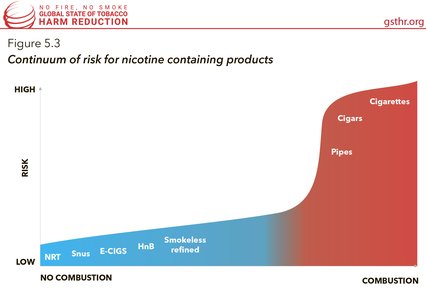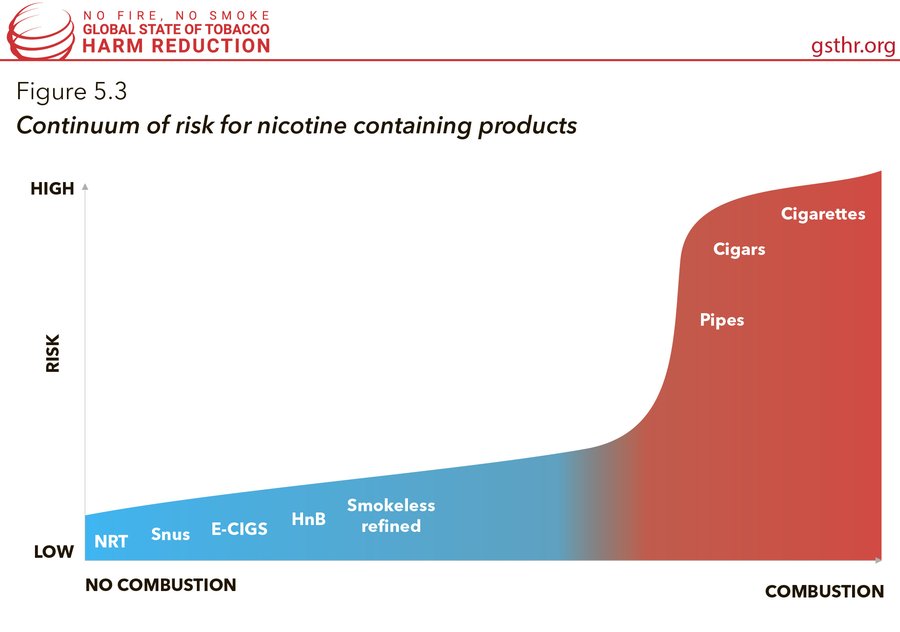Continuum of Risk for Nicotine Containing Products (2018)
Continuum of Risk for Nicotine Containing Products (2018)
Knowledge•Action•Change (2018)- No Fire, No Smoke: The Global State of Tobacco Harm Reduction


Just how much less harmful are SNP than cigarettes is a matter of scientific assessment and science communication. The risk continuum is one way of communicating the differences in risk when using different kinds of nicotine-containing products. The problem in trying to compute a risk continuum, and then communicating this, is that there are hundreds of different measures that could be considered, derived from laboratory studies, clinical studies of short-term health impacts, through to long-term epidemiological studies.
Two landmark reviews brought the evidence together on e-cigarettes and have been published in the UK, from Public Health England and the Royal College of Physicians. The first key point is that there are no circumstances in which it is safer to smoke than to use e-cigarettes.
Their headline conclusions are:
» Vaping is substantially safer than smoking;
» People who switch from smoking to vaping can experience an improvement in respiratory health;
» Switching to vaping can help people quit smoking;
» There are currently no known long-term adverse health effects due to vaping;
» There is no evidence that young people who experiment with e-cigarettes will become regular cigarette smokers.
The more cautious and conditional evidence review from the US National Academy of Sciences, The Public Health Consequences of E Cigarettes (2018), stated nonetheless: “There is conclusive evidence that completely substituting e-cigarettes for combustible tobacco cigarettes reduces users’ exposure to numerous toxicants and carcinogens present in combustible tobacco cigarettes”.
And while opposed to SNP, the WHO briefing on e-cigarettes conceded that “it is very likely that average ENDS use produces lower exposures to toxicants than combustible products”.
Public Health England has asserted that “based on current knowledge, stating that vaping is at least 95% less harmful than smoking remains a good way to communicate the large difference in relative risk unambiguously…”. This means that e-cigarettes are not totally harmless, but that the appropriate scientific approach is to compare their safety (and all SNP) relative to combustible cigarettes, rather than examine the absolute safety of the products in isolation.
In other words, harm reduction, not harm eradication.
See also p. 62 of the report: No Fire, No Smoke: The Global State of Tobacco Harm Reduction 2018 — Global State of Tobacco Harm Reduction (gsthr.org)
